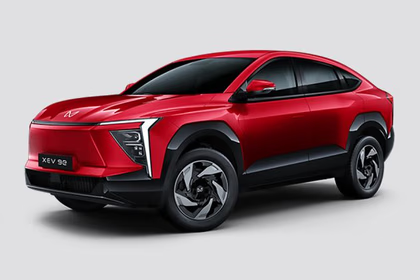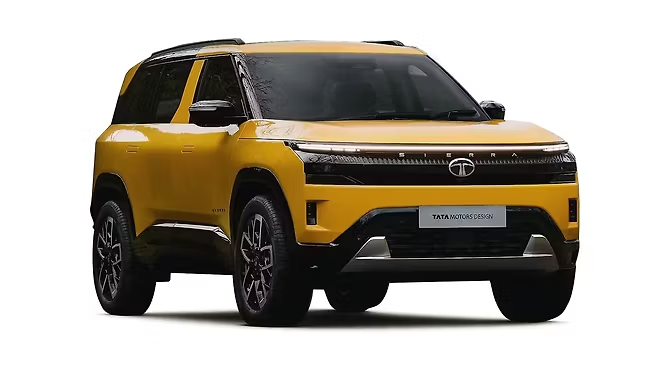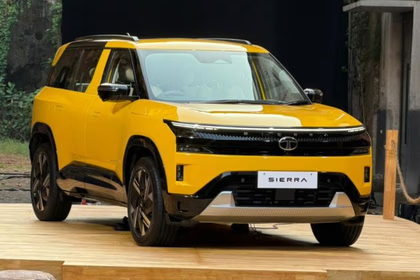Introduction
Brief overview of India’s shift toward electric mobility
- Key Info in Bullets
- Reduction in urban air pollution and carbon footprint
- Contribution to India’s Net Zero targets (2070)
- Comparison with diesel/CNG alternatives
- 2. Tech-Powered Passenger Experience
- 3. Lower Operational Costs & Long-Term Savings
- 4. Designed for Indian Roads, Built to Last
- 5. Creating Green Jobs & Ecosystem Development
India is experiencing a dramatic transformation in its transport landscape by reducing fuel imports and addressing worsening urban air quality. With the government projecting ambitious targets—such as achieving 30% Neugo EV penetration by 2030 and reaching net-zero emissions by 2070—the focus has shifted squarely to electric mobility. Public transport, and buses specifically, are at the core of this evolution.

Electric buses are not only visible signs of the green movement but are also a cost-friendly and scalable solution to lower emissions in cities. In this changing scenario, Neugo EV buses have been a significant force factor, wedging the latest technology, local production, and sustainability to change the face of how India moves.
Key Information in Bullets
- India aims for 30% EV penetration by 2030 with a firm policy and subsidy push
- The transport sector accounts for ~13.5% of India’s CO₂ emissions—buses hold the key to lowering it
- Transition to electric public transport is essential to clean up urban air quality
- FAME-II (Central) and state government schemes are leading electric bus purchases in cities
- Neugo EV buses provide a contemporary, emission-free alternative to diesel and CNG fleets
- India’s EV bus market is expected to see 30%+ CAGR growth in the next 5 years
Introduction to Neugo EV buses and their growing presence
- Neugo is GreenCell Mobility’s electric mobility division, with a focus on green public transport.
- The company runs under the motto of providing 100% electric buses, zero-emission buses in Indian cities.
- Neugo buses are already in operation in several states, such as Maharashtra, Uttar Pradesh, Delhi-NCR, and others.
- Supported by international investors such as EverSource Capital, facilitating robust financial and tech strength
- The fleet operates intra-city as well as inter-city routes, focusing on high-density commuter routes.
- Neugo has already put hundreds of e-buses into operation, with plans to increase to thousands shortly.
- Famous for intelligent features such as GPS tracking, regenerative braking, low-floor vehicles, and real-time monitoring systems
- Part of India’s most significant private effort toward decarbonized, technology-enabled bus transit systems
Hook: Why Neugo isn’t just another bus, but a movement in motion
- Not transport alone — Neugo is India’s mobility revolution on the move, powered by green fuel
- One Neugo bus takes out one polluting diesel vehicle, cleaning the air, one ride at a time
- Symbol of progress: Combines sustainability, technology, and comfort in public transport
- Enables cities to achieve Net Zero and clean air targets sooner
- Marks a transition from traditional fleets to smart, environment-friendly commuting
- More than electric — about transforming how India moves, breathes, and grows
- Neugo is building a future where public transport is intelligent, quiet, and environmentally friendly
1. Zero Emissions, Maximum Impact
Neugo EV buses are electric, with zero tailpipe emissions while in operation. In densely populated cities where public transport is the lifeline, this transition has a giant collective environmental effect. Furthermore, by powering up from renewable energy grids when available, the carbon footprint of such buses is further reduced, making them an intelligent option for India’s sustainable future.
Key Info in Bullets
- 100% electric powertrain = no tailpipe emissions
- No CO₂, NOx, or PM emitted into the air
- Contributes to reducing urban air pollution and respiratory disease
- Quieter operation minimizes noise pollution in cities
- Every e-bus can reduce over 90 tons of CO₂ every year compared to a diesel bus
- Complies with India’s climate targets and clean air action plans
- Cleaner public transport = healthier, greener cities
Reduction in urban air pollution and carbon footprint
- Replaces diesel buses, reducing toxic emissions such as PM2.5, NOx, and CO₂ from urban air
- With each Neugo e-bus, 90,000+ kg of CO₂ is eliminated every year
- Reduces auto contribution to smog and respiratory disease in metro cities
- Facilitates cleaner air in pollution hotspots such as Delhi, Mumbai, Lucknow, and Pune
- Assists India in decreasing its transport sector carbon footprint (~13.5% of overall emissions)
- Helps India meet Paris Agreement & Net Zero targets
- It urges the transition to renewable-powered charging infrastructure for cleaner energy consumption
Contribution to India’s Net Zero targets (2070)
- Neugo EV buses directly contribute to the decarbonization of India’s public transportation
- Complements India’s commitment to achieve Net Zero carbon emissions in 2070
- Less dependent on fossil fuels such as diesel and petrol
- Helps state transport units (STUs) shift towards green operations
- Complies with government initiatives such as FAME-II and Energy Transition Mission
- Encourages the use of clean energy for charging, further reducing lifecycle emissions
- Each Neugo bus brings India one step closer to a low-carbon, climate-resilient future
Comparison with diesel/CNG alternatives
- Zero tailpipe emissions vs. CO₂, NOx, and PM emitting diesel/CNG buses
- Neugo e-buses emit 90% less CO₂ over their lifetime than diesel buses
- Lower cost per km to operate because electricity is less expensive than fossil fuels
- Quieter ride: Electric buses create much less noise pollution than combustion engines
- Less maintenance required, no engine, no oil changes
- Diesel buses release ~2.7 kg CO₂ per liter; Neugo releases none when in operation
- CNG buses, cleaner than diesel, still release methane, a potent greenhouse gas
- Electric buses also excel in acceleration, smoothness, and regenerative braking
2. Tech-Powered Passenger Experience
Neugo EV buses are not only transforming public transportation with sustainability, but also with intelligent, technology-enabled experiences for commuters and operators. AI-powered diagnostics systems in the buses continuously scan vehicle health, allowing predictive maintenance and reducing downtime. Real-time GPS tracking helps commuters to know exactly when their bus will arrive, making it more reliable and cutting wait times. In a post-pandemic era, facilities such as auto-sanitization systems provide cleanliness and security on everyday journeys. Neugo is constructing a future where public transportation isn’t necessarily a necessity—it’s an option people choose willingly.
Key Info in Bullets
- AI-based diagnostics for real-time vehicle health monitoring and decreased breakdowns
- GPS tracking for real-time bus location and arrival time alerts
- Auto-sanitization for increased hygiene standards after COVID
- Low-floor operation for convenient entry/exit, particularly for senior citizens and the differently-abled
- Air-conditioned compartments for all-weather comfort
- Digital displays display routes, next stops, and safety tips
- USB charging points and ergonomic seating for increased passenger comfort
- Integration of a mobile app for route planning, bus ETAs, and feedback submission
- Designed for today’s urban commutes—safe, innovative, and seamless
Passenger comforts: Low-floor design, air conditioning, digital displays
- Low-floor boarding ensures comfortable entry for everyone, including older people, children, and persons who use wheelchairs.
- Comfortable wide doors and ramp support for quick, convenient boarding and alighting
- Completely air-conditioned cabins ensure comfort during all seasons, particularly in the summer.
- Ergonomic seats with sufficient legroom improve ride comfort for long journeys.
- Electronic route displays indicate approaching stops, route data, and safety messages.
- Real-time LED displays update passengers on delays or diversions.
- Superior interior illumination and silky suspension provide an upscale in-transit environment.
- Engineered to be equal to or surpass contemporary metro rail comfort standards
Accessible for differently-abled and elderly riders
- Easy boarding without the need for stairs or steep steps due to low-floor design
- Automated ramps or a kneeling feature are provided for wheelchair access
- Grab handles and anti-slip floors provide safe movement within the bus
- Comfortable, wide entry and exit doors facilitate easy entry of mobility aids
- Visual and audio announcements aid visually impaired and deaf passengers
- High contrast color interiors assist the visually impaired to move around more easily
- Meets universal accessibility requirements for inclusive mobility
App integration for smoother travel planning
- Real-time tracking of buses through mobile applications enables accurate planning of the trip
- Live updates of estimated times of arrival lower waiting time at bus stops and increase convenience
- Features of route planning would allow users to select the best buses and links
- Digital ticketing and cardless payments reduce boarding time
- Push alerts for delays, diversions, or service notifications
- Feedback and support directly through the application for an improved commuter experience
- Integration with urban mobility platforms (such as Chalo, Ridlr, or government-owned apps) for smooth multimodal travel
- Equips commuters with data-driven, trustworthy access to public transport
3. Lower Operational Costs & Long-Term Savings
One of the strongest points in favour of Neugo EV buses is their much lower cost of operation per kilometer than diesel or CNG options. Electric buses operate on electricity, which is much more affordable than fossil fuels in India, and hence, there are savings made every day of operation. They also use energy more effectively with regenerative braking systems, which return power to the battery.
With no oil changes, fewer moving parts, and less mechanical wear and tear, maintenance expenses are lowered significantly. In the long run, that translates to substantial savings for private operators and transport agencies alike. With reduced fuel dependence, Neugo also shields fleets from fuel price fluctuations, guaranteeing cost predictability and fiscal sustainability. It’s not only green—it’s fiscally intelligent.
Key Info in Bullets
- ₹1.2–₹1.5/km electricity cost, significantly lower than diesel (~₹6–₹8/km)
- Operational expenses reduced by up to 60% compared to conventional buses
- Zero fuel dependence = protection from unpredictable diesel/CNG prices
- Increased energy efficiency and battery lifespan through regenerative braking
- Fewer components = lower maintenance costs and longer intervals
- Reduces lakhs of rupees per bus per annum in fuel and maintenance
- Ideal for STUs and fleet operators seeking long-term ROIs and cost predictability
Fewer moving parts = lower maintenance
- No engine, gearbox, or exhaust system, lowering mechanical complexity
- No fuel filters, spark plugs, or oil changes required
- Fewer wear-and-tear parts in electric drivetrains
- Fewer breakdowns and less downtime
- Less frequent and predictable maintenance saves time and labor
- Battery management systems (BMS) assist in the early detection of issues before costly failure
- Maintenance costs 30–40% less compared to diesel/CNG buses
- Best suited for large fleets that want to maximize uptime and service availability
Battery efficiency and lifecycle cost advantage
- Improved energy efficiency: Electric buses retain ~85–90% of battery energy in motion, compared to ~30–35% for diesel engines
- Long operating life of advanced lithium-ion battery packs (up to 7–10 years)
- Lower energy cost per kilometer due to efficient power conversion from battery to wheels
- Battery warranties and controlled charging cycles provide optimal performance over the lifecycle.
- TCO is much lower throughout the lifecycle of the vehicle
- Battery management systems enhance charging, safety, and longevity.
- Through end-of-life, batteries can be repurposed as stationary storage, providing circular value.
- Reduces Neugo buses as a future-proof investment option for both private and public fleet operators
Economic viability for state transport bodies (STUs)
- Lower operating expenses (fuel + maintenance) minimize the long-term financial burden on STUs
- Higher passenger capacity at low per-km cost enhances farebox recovery
- Government subsidies and FAME-II incentives sustain adoption with lower upfront costs
- Leasing and OPEX models (such as GCC – Gross Cost Contract) make adoption affordable with no significant capital outlays
- Predictable energy price provides cost stability in contrast to volatile fuel markets
- Lower downtime = increased daily utilization and fleet efficiency
- Enables STUs to achieve clean energy targets and emissions goals without sacrificing on budget
- Sustained savings enhance financial stability and the quality of public services
4. Designed for Indian Roads, Built to Last
Neugo EV buses are not imported technology dressed up for India—they’re designed from the ground up to meet Indian roads. Whether it’s the potholed roads of urban agglomeration or the rough sections of semi-urban highways, these buses have a specially engineered chassis that can withstand and deliver under any condition.
The suspension system is ride stability-optimized, and ground clearance is sufficient to tackle uneven roads and speed breakers. The body structure is strengthened for durability against heavy passenger loads and repeated braking for longevity in stop-start heavy traffic conditions. This rugged build not only provides passenger comfort but also minimizes wear and tear, making Neugo buses a safe bet for long-term fleet deployment.
Key Info in Bullets
- Chassis engineered to suit Indian road conditions—urban, rural, and semi-urban
- Above-ground clearance to cross speed bumps, potholes, and uneven road surfaces
- Heavy-duty suspension system for a smooth ride on uneven roads
- Rigidity of the frame is guaranteed for heavy loads and repeated braking
- Tested for high thermal and mechanical stress over varied climates and road conditions
- Built for stop-start traffic prevalent in Indian cities, minimizing drivetrain stress
- Long life = improved return on investment for STUs and fleet operators
- Provides high reliability in both Tier 2/3 cities and metros
Superior suspension and regenerative braking systems
- Sophisticated suspension system dampens pothole shocks and road unevenness
- Electronically controlled suspension responds to road conditions and varying loads
- Suppresses vibrations and cabin noise, increasing in-bus comfort
- Regenerative braking system converts braking energy into battery power, maximizing efficiency
- Extends battery range and minimizes energy consumption per trip
- Less brake component wear, reducing maintenance frequency and cost
- Helps promote safer, smoother braking, particularly in stop-and-go urban traffic
Strong build quality + all-weather operational capability
- Strong body construction to withstand day-to-day wear and tear in high-density city usage
- Constructed from corrosion-proof materials to withstand rain, humidity, and dust
- Sealed electrical parts prevent water entry during monsoons
- Effective thermal management systems provide battery performance in extreme temperatures
- Operates smoothly in extreme Indian weather — from extremely hot summers to heavy rainfall
- IP-rated parts guarantee electrical safety in every environmental condition
- Reinforced panels and underbody shielding protect against road debris and flooding
- Provides consistent performance year-round, reducing weather-related breakdowns
Locally manufactured components, boosting Make in India
- Most of the Neugo EV bus components are procured and assembled locally in India
- Complies with “Make in India” and “Atmanirbhar Bharat” (self-reliant India) movements
- Fosters indigenous growth of EV supply chains — motors, batteries, chassis, and electronics
- Reduces reliance on foreign parts, allowing for improved cost control and quicker servicing
- Creates local jobs in manufacturing, assembly, and component supply
- Facilitates technology transfer and R&D within the Indian automobile and EV industries
- Price-aligns the product and makes it competitive to ensure it meets local demand
- Enhances India’s global position as a manufacturing hub for clean mobility
5. Creating Green Jobs & Ecosystem Development
Neugo EV buses aren’t only driving change on roads—they’re making it on the job market as well. Electric mobility, particularly in commercial and public transport, is creating new job opportunities across manufacturing, assembly, operation, and servicing. From highly skilled employees producing battery packs to trained technicians in EV diagnostics and high-voltage technologies, each Neugo bus is helping fuel green jobs across India.
With local manufacturing and an increasing network of service centers, the company is creating a future-proof workforce that is aligned with environmentally sustainable industry aspirations. This direct hiring not only sustains livelihoods but also assists India in shifting from old auto jobs to clean-tech models of employment, developing a sustainable and environmentally friendly workforce.
Key Info in Bullets
- Manufacturing and assembly of buses are employed in Indian factories
- EV servicing and maintenance need skilled technicians and engineers
- Develops skillset in battery technology, electronics, and e-mobility systems
- Develops local employment streams within cities and Tier 2/3 cities
- Supports green collar employment towards India’s sustainable development objectives
- Supports partnering with ITI, polytechnic, and training institutions
- Creates jobs in design, prototyping, logistics, and after-sales service
- Enhances regional economies where production facilities are situated
Indirect job creation in charging infrastructure, battery tech
- The installation of a charging station creates employment in construction, electrical work, and installation
- Drives demand for EVSE (Electric Vehicle Supply Equipment) manufacturers and technicians
- Cell manufacturing, pack assembly, logistics, and recycling jobs in the battery supply chain
- Increases employment in the charging network and fleet management software development
- Creates employment in energy management, grid integration, and power backup solutions
- Spurs’ development of startups and SMEs working on EV infrastructure and battery technology
- Drives demand for R&D talent in battery technology, thermal management, and BMS
- Double employment creation across OEMs, energy players, and technology partners
EV ecosystem growth: Suppliers, R&D, charging network expansion
- Supplier networks extending to fulfill demand for motors, controllers, battery packs, and electronics
- Influences tier-1 and tier-2 suppliers to transition from ICE components to EV-compatible components
- R&D spending is increasing in battery efficiency, lightweight materials, and intelligent fleet technology
- Promotes innovation in thermal management systems, AI-based diagnostics, and energy optimization
- Growing public and private EV charging stations along urban and intercity corridors
- Connection with renewable energy sources for eco-friendly charging solutions
- Drives cooperation among the automotive, power, and software industries
- Creates a sustainable EV ecosystem that is consistent with national energy and mobility objectives
Encouraging city-wide EV adoption through visible proof
- Neugo buses are rolling displays of clean, contemporary electric mobility
- High visibility daily instills public confidence and EV reliability awareness
- Successful implementation inspires other operators and cities to embrace e-mobility
- Forms a domino effect—buses pave the way for autos, taxis, and two-wheelers
- Provides actual on-road cost-effectiveness, performance, and environmental benefits
- Emphasises the point that EVs are viable, scalable, and future-proof
- Instills public faith in EV infrastructure, such as charging and service support
- Assists cities in experiencing more rapid EV penetration within national/state goals and regulations
Conclusion
Neugo EV buses are more than just vehicles—they’re greener, smarter, and more sustainable tomorrow. From zero emissions and intelligent technology to low-cost operations and accessible design, every detail of Neugo’s product demonstrates that electric buses are no longer an experiment—they’re the new norm.
As cities grapple with growing pollution, traffic jams, and fuel prices, clean mobility has to start at the very heart of urban transportation: buses. Electrifying mass transit doesn’t simply make daily commutes better—it’s effect is to change the face of our cities. It’s time to ask for more. Please stand up for cleaner, greener, and more innovative public transport options in your city, because the path to a sustainable India begins with how we get to work each day.
FAQs
1. What is Neugo, and who runs it?
Neugo is an electric bus brand run by GreenCell Mobility, an Indian electric mobility company with a vision to drive clean public transport. It operates 100% electric buses in several Indian states under various contracts and programs.
2. Where are Neugo electric buses currently deployed in India?
Neugo EV buses are plying on roads in cities of Maharashtra, Uttar Pradesh, Delhi-NCR, Madhya Pradesh, and Gujarat, and plans to expand to southern and eastern India too.
3. Are Neugo buses pure electric or hybrid?
Neugo buses are pure electric with no tailpipe emissions at all. They run on batteries and do not consume fossil fuels such as diesel or CNG.
4. In what way do Neugo buses aid in curbing pollution?
Every Neugo bus reduces the necessity for a diesel bus by as much as 90 tons of CO₂ every year, as well as pollutants such as PM2.5 and NOx, which improves urban air quality directly.
5. Are Neugo buses accessible to differently-abled passengers?
Yes, Neugo buses are equipped with low-floor entry, wide doors, and ramps for accessibility for wheelchair users, elderly travelers, and others who have mobility issues.
6. What technology is employed in Neugo buses?
Neugo buses employ AI-based diagnostics, real-time GPS tracking, regenerative braking, digital route display, and are integrated with mobile apps for hassle-free travel planning.
7. Are Neugo buses Indian-made?
Yes, the majority of Neugo bus components are locally manufactured and assembled in India, supporting the Make in India and Atmanirbhar Bharat initiatives.
8. Who can operate or collaborate with Neugo for city deployment?
Neugo works with state transport undertakings (STUs), municipalities, and private fleet operators under various models, such as GCC (Gross Cost Contract) and lease agreements.
9. Are these buses eligible under the FAME-II subsidy?
Yes, Neugo buses are eligible under FAME-II, India’s national scheme for promoting electric mobility, which helps reduce upfront procurement costs for governments and operators.
10. How are Neugo buses charged, and how long does it take?
Neugo buses are being charged at special depots using DC fast chargers. A standard complete charging can take 2–4 hours, depending on the battery capacity and output of the charger.




